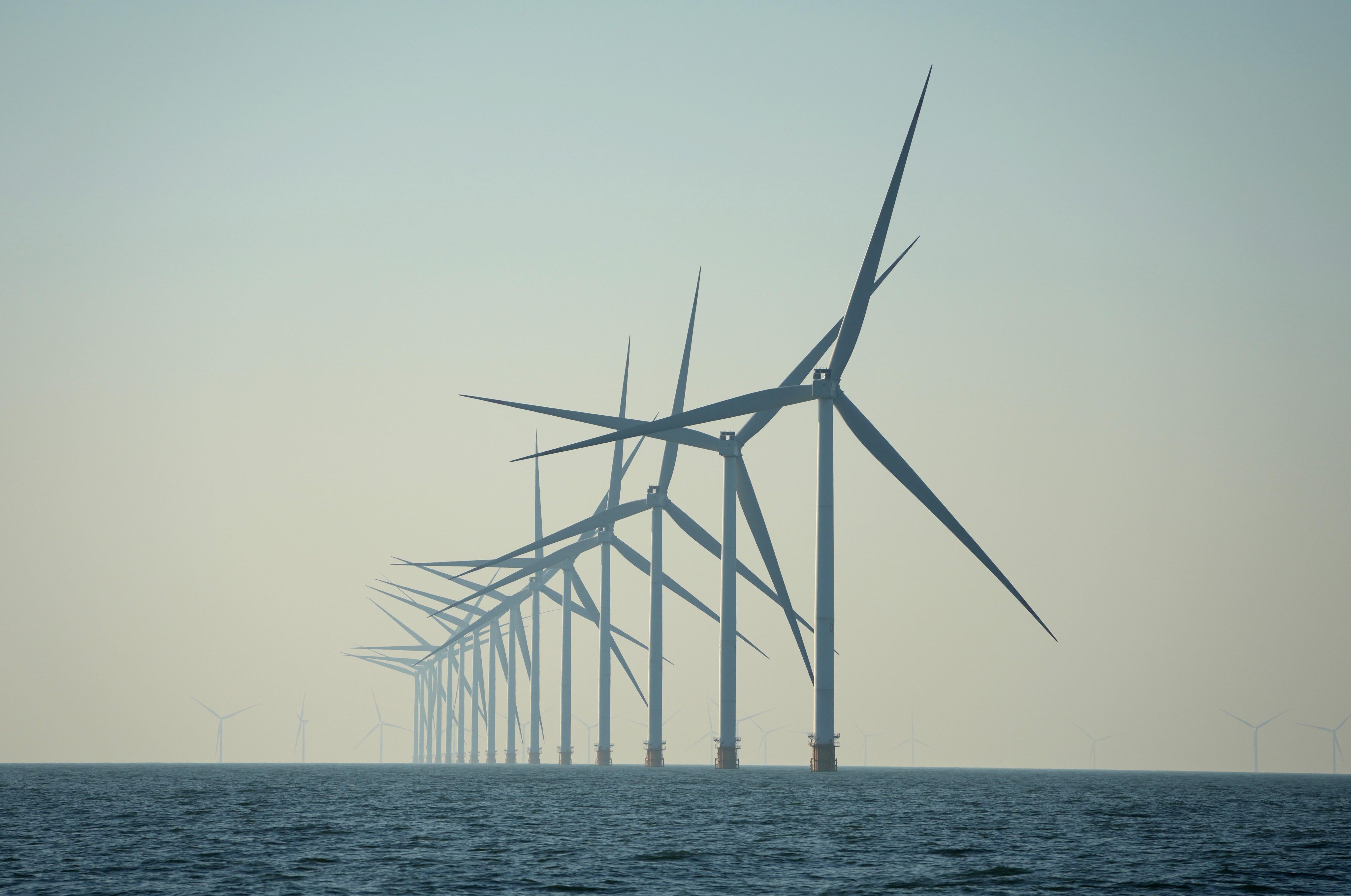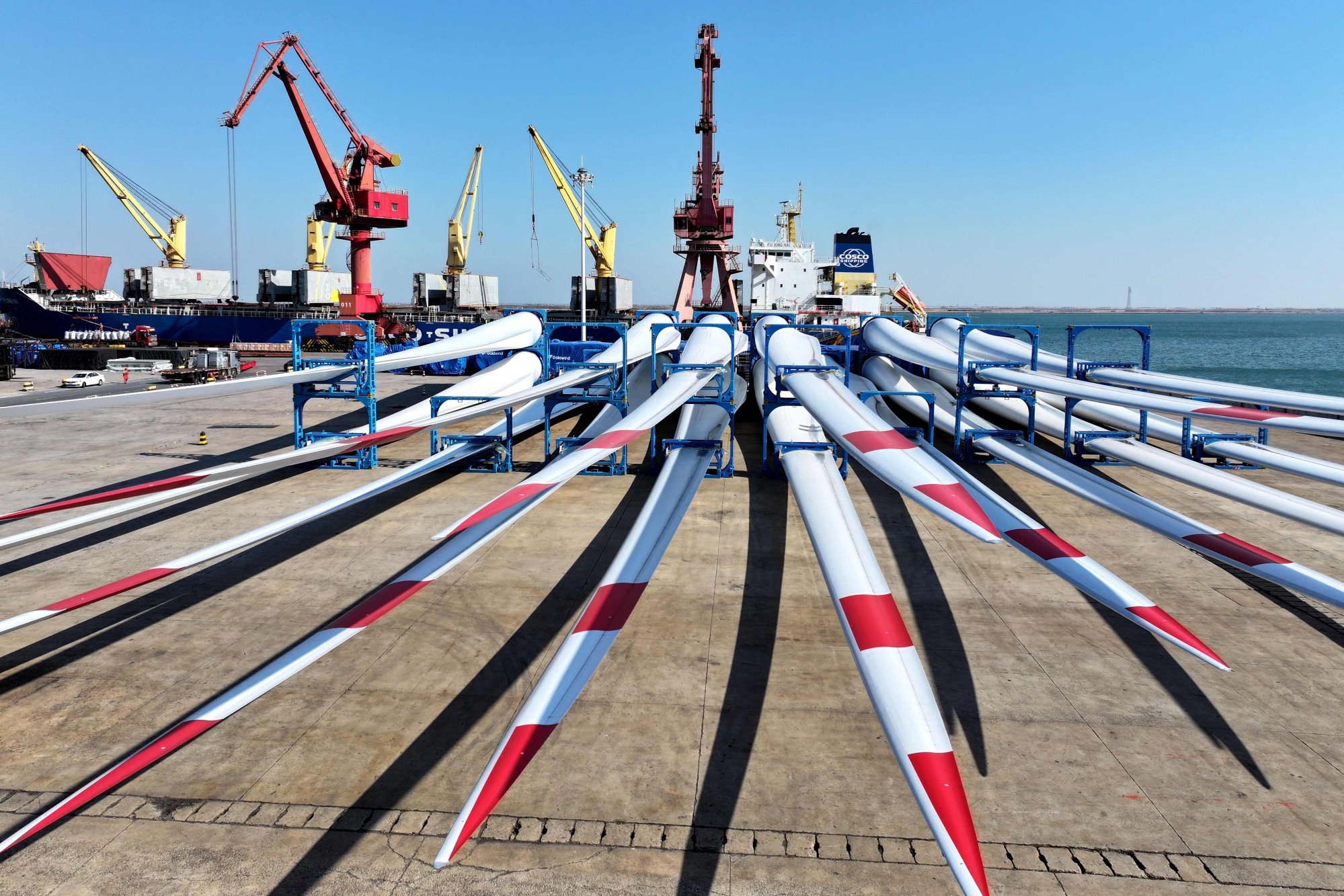China spins up offshore wind energy as Beijing promotes marine economy
Country on track to double offshore capacity additions this year, report from Global Energy Monitor says

China has ramped up offshore wind energy development, as the form of renewable energy aligns with Beijing’s goals of carbon neutrality, energy security and developing the marine economy to boost economic growth.
China added more than 4.4 gigawatts (GW) of offshore wind capacity in the first six months of the year, the same amount it added in all of 2024, according to a report by the non-profit Global Energy Monitor (GEM) on Wednesday.
The report said the country was expected to add at least 9GW of offshore wind capacity this year – more than half of projected global additions. China has another 22GW of offshore wind projects under construction that could commence operation beyond 2025, it added.
“China is developing a robust offshore wind technology industry, as its development boundaries are pushed farther into deep-sea areas,” said Zhang Mengqi, a GEM researcher and co-author of the report. She cited strong central government support that combined direct financial subsidies with a mix of top-level planning and market-based approaches.
The report came shortly after the country’s farthest offshore wind power project, located off Yancheng in the eastern province of Jiangsu, started operation last week, according to its developer, state-owned China Three Gorges Corporation. With turbines as far as 85.5km offshore, the project was expected to generate more than 2.6 terawatt-hours of electricity annually, enough to power around 1.1 million three-person households for a year, a spokesperson said.
President Xi Jinping mentioned offshore wind energy during a high-level economic meeting last week as a key sector to advance the “high-quality development” of China’s marine economy. Offshore wind power was also featured in Beijing’s annual government work report in March, which said the sector would help with job creation, energy security and coastal provinces’ economic development.
Although offshore wind represented only 9 per cent of China’s total wind power capacity, it was gaining traction as coastal provinces followed Beijing’s call to boost the marine economy and pursue ambitious decarbonisation targets, according to GEM. Offshore wind development grew by an average of 41 per cent a year over the past five years, it said.
Jiangsu and Guangdong provinces stood out as national leaders, with 12.6GW and 11.4GW of installed offshore wind capacity, respectively, which accounted for 55 per cent of the country’s total offshore capacity, GEM said.

State-owned enterprises like China Three Gorges, along with wind-turbine producers Goldwind, Mingyang and Envision, have taken the lead in developing offshore projects. According to S&P Global, offshore wind could become one of China’s most affordable renewable energy sources by 2050.
“China has long been head and shoulders above the rest in building wind and solar, so it’s not surprising to see the uptick in offshore capacity,” Zhang said. “What is really impressive is just how much potential there is to displace emissions from fossil fuels and drive a clean energy transition along the coast’s industrial heartland.”
The world’s largest developer of renewable energy, China is building 510GW of utility-scale solar and wind capacity, an increase of 57 per cent over the previous year, as it strives to peak carbon emissions by 2030, GEM’s report said.
China has 1.3 terawatts of utility-scale solar and wind capacity either planned or under construction, which could generate more electricity than neighbouring Japan consumed in all of 2023, it said.